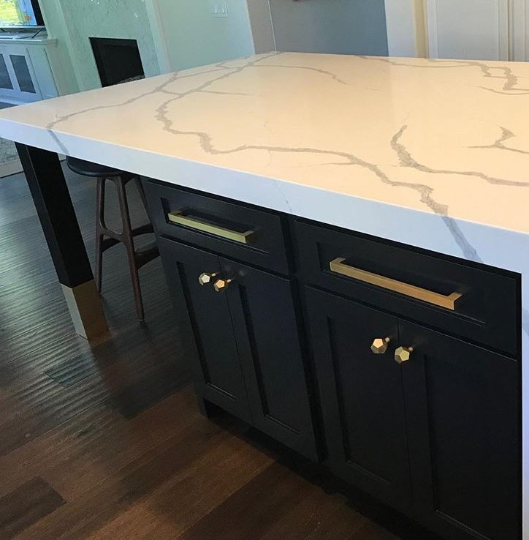Rely on Expert Workmanship for Tailored Legs For Kitchen Island Concepts
Rely on Expert Workmanship for Tailored Legs For Kitchen Island Concepts
Blog Article
Important Elements to Consider When Picking Legs For Cooking Area Island
Choosing the suitable legs for a kitchen island entails a mindful evaluation of multiple factors that can significantly affect both performance and aesthetic allure. Among these, the choice of product plays a critical role in making certain longevity, while the style must enhance the existing decoration. In addition, considerations such as elevation and weight support are essential for security and comfort. As we discover these aspects, it comes to be clear that each decision can have far-ranging ramifications for the total kitchen area experience. What subtleties should be thought about in each of these groups to achieve the excellent balance?
Material Options
When picking legs for a cooking area island, understanding the different product alternatives is important for accomplishing both visual allure and architectural integrity (Legs For Kitchen Island). The option of product dramatically influences not only the sturdiness of the island however additionally its total design and functionality
Steel legs, usually made from stainless steel or functioned iron, add a contemporary and industrial feel while making certain durability and security. These products are resistant to wear and can support significant weight, making them excellent for bigger islands.
One more choice is engineered products, like MDF or plywood, which can be extra economical while still using a variety of finishes. Nonetheless, they might not offer the same degree of security as solid timber or steel. Materials such as acrylic or glass can produce a contemporary appearance, though they may call for additional assistance to guarantee security.
Eventually, the selection of product for kitchen island legs need to line up with the desired performance and the overall style of the kitchen.
Design And Style

When considering style, the shape and coating of the legs are critical. Tapered legs can provide a feeling of agility and style, while thicker, extra durable legs can communicate stamina and stability. Furthermore, the finish-- be it painted, tarnished, or all-natural-- need to match the cabinets and counter top materials to develop a unified appearance.
Additionally, the style of the legs can likewise reflect individual preference. Custom-made or ornamental legs, such as those featuring detailed makings or special geometric shapes, can function as focal factors, including character and individuality to the kitchen area. Eventually, the right selection will certainly not only boost performance but additionally raise the aesthetic allure, making the kitchen area island a standout feature of the home.
Elevation Considerations
Picking the suitable elevation for kitchen island legs is important, as it straight impacts both performance and convenience. The basic elevation for a cooking area island usually varies from 36 to 42 inches, aligning with common counter top elevations.

It is also important to make up individuals' preferences and elevations. Personalizing the elevation can make sure a comfortable experience for all household members, making the cooking area island a much more functional and delightful area.
Weight Assistance
Guaranteeing adequate weight support for cooking area island legs is crucial for both safety and like this capability. The kitchen island usually serves numerous functions, consisting of food preparation, eating, and additional storage, demanding a robust assistance framework. When choosing legs, it is critical to think about the total weight capacity called for based on the island's meant usage and the materials that will be positioned on it.
The choice of material for the legs plays a significant function in their weight-bearing capacities. Solid timber, steel, and heavy-duty compounds generally give exceptional toughness compared to lighter products. Additionally, the style of the legs-- whether they view it are right, tapered, or have a pedestal form-- can influence their ability to distribute weight properly across the structure.
In addition, the leg placement should be tactically intended to boost stability. Legs placed at the corners or with a larger base can much better sustain larger loads. Constantly speak with the manufacturer's requirements regarding load restrictions to make sure that the legs can maintain the designated weight without jeopardizing safety and security. In recap, selecting kitchen island legs with appropriate weight support is necessary for creating a safe and functional culinary area.
Installment and Upkeep
Correct installation and upkeep of kitchen island legs are essential for guaranteeing long life and stability. This usually includes safeguarding the legs to the island base using proper fasteners, making sure that the legs are degree and lined up.
As soon as installed, routine upkeep is necessary to protect the honesty and appearance of the legs - Legs For Kitchen Island. For wood legs, routine cleaning with a moist towel and application of ideal wood polish can protect against moisture damage and keep their coating. Metal legs may call for a mild cleaning service to get rid of oil and grime, complied with by a completely dry towel to avoid rust development
Furthermore, check the legs consistently for indicators of wear or damages, such as cracks or loose joints. Tightening screws or screws as required can additionally lengthen the life-span of the legs. By sticking to these installment and upkeep techniques, home owners can make certain that their cooking area island continues to be tough and aesthetically appealing for several years ahead.
Final Thought

Aesthetic coherence is critical in choosing the design and layout of legs for a cooking area island, as these components significantly influence the general atmosphere of the area. Conical legs can supply a feeling of agility and style, while thicker, extra durable legs can share toughness and security.Picking the appropriate height for kitchen island legs is essential, as it directly impacts both functionality and comfort. In recap, picking cooking area island legs with ample weight assistance is crucial for producing a practical and risk-free culinary space.
In conclusion, picking legs for a cooking area island demands cautious consideration of various factors, consisting of product choices, style, height, weight assistance, and setup.
Report this page